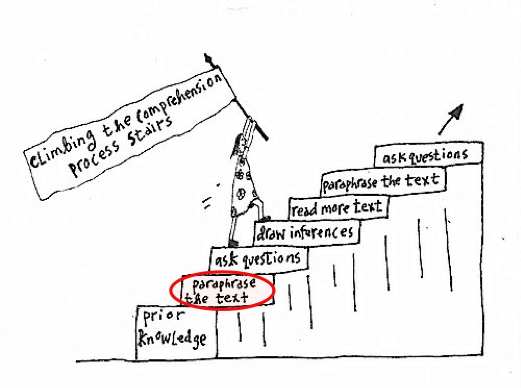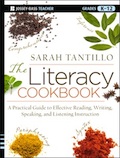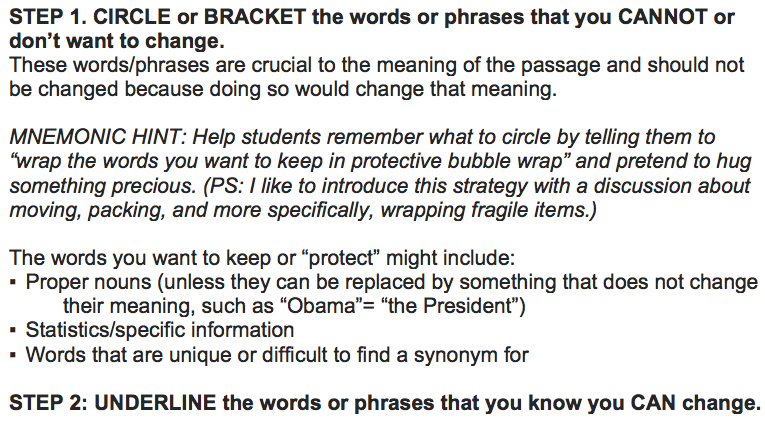Paraphrasing Is Key to Deeper Comprehension
 By Sarah Tantillo
By Sarah Tantillo
If you are trying to decide what to teach in the first few weeks of school, I have some advice: No matter what grade or subject you teach, make sure your students know how to paraphrase.
Paraphrasing is the first step on what I like to call The Comprehension Process Staircase.

For example, if you read, “The man fell down,” you might (very quickly, and without even realizing you’re doing it) turn that into, “He collapsed.” Incidentally, some people think paraphrasing means “simplifying.” It does not. It means “putting something into your own words,” and ideally that means using strong vocabulary. I opted for “collapsed” in this case because at least it was multi-syllabic.
Incidentally, some people think paraphrasing means ‘simplifying.’ It does not.”
Whether you teach ELA, social studies, science, or even math, your students must be able to paraphrase to comprehend the text(s) you place in front of them. If they can’t paraphrase, they will not be able to ask questions about the text or draw inferences from it.
And if they can’t draw inferences, they will never arrive at the main idea/argument, which derives from an accumulation of inferences. (For more information on questioning and how it drives inference, see my earlier MiddleWeb post, “The #1 Close Reading Skill.”)
We must specifically teach students to paraphrase
Given how important the skill of paraphrasing is, it’s stunning how few people actually teach their students how to do it. I think part of the problem is that we assume that humans paraphrase naturally.
And indeed, there is some truth to that. As we learn new words, we learn how they work together, and we learn how to unpack them when they are combined. Our instinct is always to try to make sense of what we encounter.

- Unpack vocabulary (attack roots; use prior knowledge and context clues).
- Unpack syntax and grammar (unpack clauses and phrases; pay attention to punctuation).
- Draw inferences from idioms.
The Literacy Cookbook provides more detail on how to teach each of these operations.
For now, let’s look at how you can train students to paraphrase STRATEGICALLY. One reason that students struggle with paraphrasing is that they are unsure which words to CHANGE vs. which to KEEP. They need a strategy for how to make these decisions.
Here’s one that works—again, no matter what grade or subject you teach:
That’s it. Here’s an example, using a random sentence from the NY Times:
For more examples, check out this free download How to Paraphrase-MS Practice (which I’ve actually used with grades 3-11). You might also visit the “Comprehension 101” page at The Literacy Cookbook website to see my summary of the four critical reading skills, beginning with paraphrasing.
__________________





































As a retired English teacher, I concur with your argument that students need to paraphrase as much for comprehension as for writing practice.
This is really interesting to me as a high school teacher preparing students for collegiate level writing. It helps me to see why my students are baffled when I explain that substituting synonyms into another author’s original sentence is not acceptable. The college standard is that the sentence structure must not be the same as the original (see “unacceptable paraphrase” from MIT Academic Integrity website, for example). This is not a criticism of your post! I absolutely support your technique for the middle grades. It gives me insight to help me explain that I’m asking them to do something slightly different because they are now older and (somewhat) more sophisticated in their thinking. Thanks for the post!